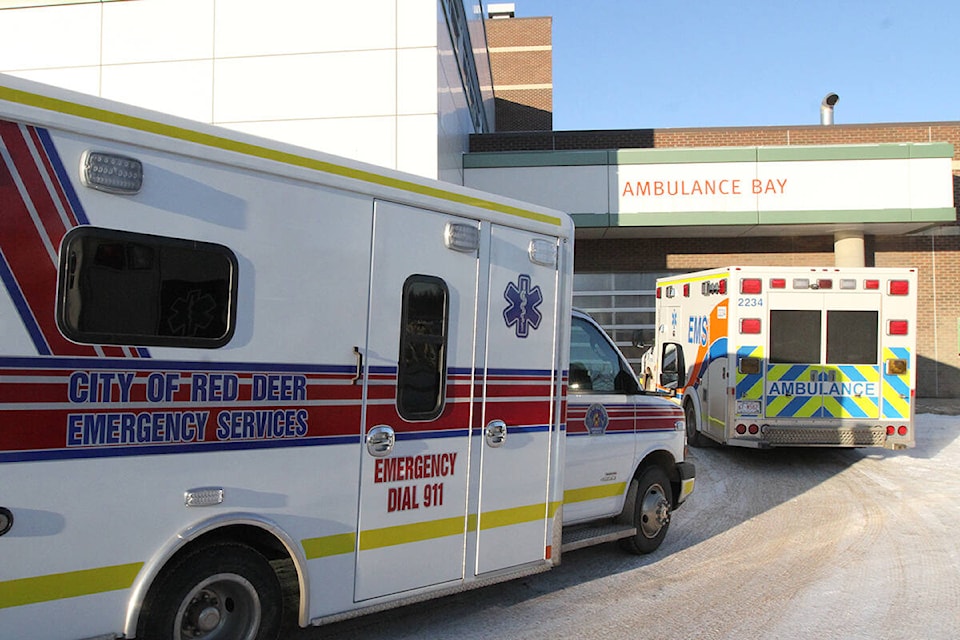More than 600 paramedic shifts were left unfilled earlier this week, a new record and a sign the ambulance system is breaking down, says the paramedics’ union.
Health Sciences Association of Alberta president Mike Parker tweeted on Thursday morning that 644 shifts were unfilled as of Aug. 22.
But that is an underestimate that does not include Red Deer’s fire-medics and paramedics with numerous other ambulance providers under contract to Alberta Health Services (AHS). It is also far above the 300 to 400 unfilled shifts that have been more routine lately.
“It shows clearly are work environment is unsafe, our staffing levels are unsafe and it is compromising the lives of our front-line health-care providers, our paramedics.
“And in turn, the wait for our patients is continuing to grow.
“We can’t staff the units anymore. The workspace is so toxic, is so difficult right now, they’re just not showing up.”
Many stressed-out paramedics, who frequently must do mandatory overtime, are quitting and moving on to other jobs and recruitment efforts are failing to replace them.
“We have unfilled positions all over the place,” he said.
Parker said exactly how many more paramedics need to be hired to fill the shifts is up to AHS to determine.
Based on the latest shift numbers, hundreds more are likely needed. AHS must also fill those jobs with full-time paramedics instead of casual staff, who have no guaranteed hours nor receive benefits.
Central region and its mix of ambulance providers is facing the same challenges as the rest of the province.
“All of those are experiencing these high vacancy rates because they don’t have the people. They’re trying to cover each other off.
“All we’re doing now is robbing Peter to pay Paul. Sending Innisfail to cover Red Deer and then now there is no one in Innisfail.”
If the current situation is not fixed, patients will continue to wait longer for an ambulance to arrive as ambulances are plucked from other communities to respond to calls elsewhere. That means paramedics must drive further and longer and often search for a place to take their patients.
“The whole thing compounds.”
Earlier this month, the Opposition NDP released data for Calgary obtained through a freedom of information request.
It showed that in the first six months of 2022, there were 2,522 red alerts — when no ambulances were available in the system to respond to calls — an average of 420 each month. That average more than doubles what was recorded for the same six months in 2021.
AHS could not be reached for comment on Thursday. But they have said previously that Alberta has faced an unprecedented demand on emergency services since last year.
Early this year, AHS rolled out a 10-Point Plan that includes ensuring that calls that do not need an EMS response are directed to more appropriate, such as Health Link.
As of last December, EMS has also stopped automatically dispatching ambulances to non-injury motor vehicle collisions. A Metro Response Plan has also been created to keep suburban ambulances in their home communities instead of using these ambulances to cover urban areas when call volumes are highest.
Ten ambulances are also being added in both Edmonton and Calgary over the next two years, also there is a pilot project to use other vehicles to transfer patients who do not need acute care between hospitals.
